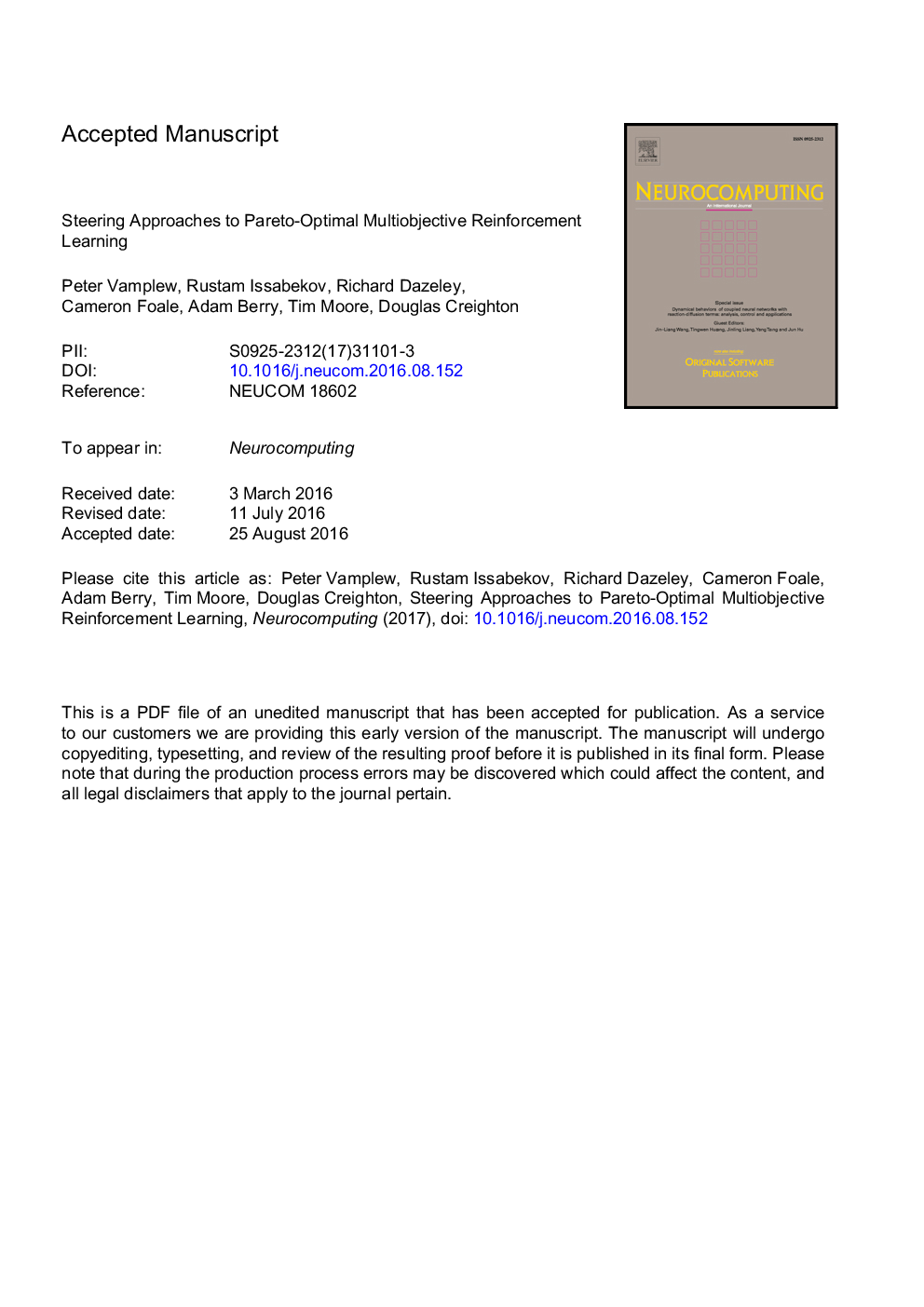| Article ID | Journal | Published Year | Pages | File Type |
|---|---|---|---|---|
| 4947080 | Neurocomputing | 2017 | 37 Pages |
Abstract
For reinforcement learning tasks with multiple objectives, it may be advantageous to learn stochastic or non-stationary policies. This paper investigates two novel algorithms for learning non-stationary policies which produce Pareto-optimal behaviour (w-steering and Q-steering), by extending prior work based on the concept of geometric steering. Empirical results demonstrate that both new algorithms offer substantial performance improvements over stationary deterministic policies, while Q-steering significantly outperforms w-steering when the agent has no information about recurrent states within the environment. It is further demonstrated that Q-steering can be used interactively by providing a human decision-maker with a visualisation of the Pareto front and allowing them to adjust the agent's target point during learning. To demonstrate broader applicability, the use of Q-steering in combination with function approximation is also illustrated on a task involving control of local battery storage for a residential solar power system.
Keywords
Related Topics
Physical Sciences and Engineering
Computer Science
Artificial Intelligence
Authors
Peter Vamplew, Rustam Issabekov, Richard Dazeley, Cameron Foale, Adam Berry, Tim Moore, Douglas Creighton,
